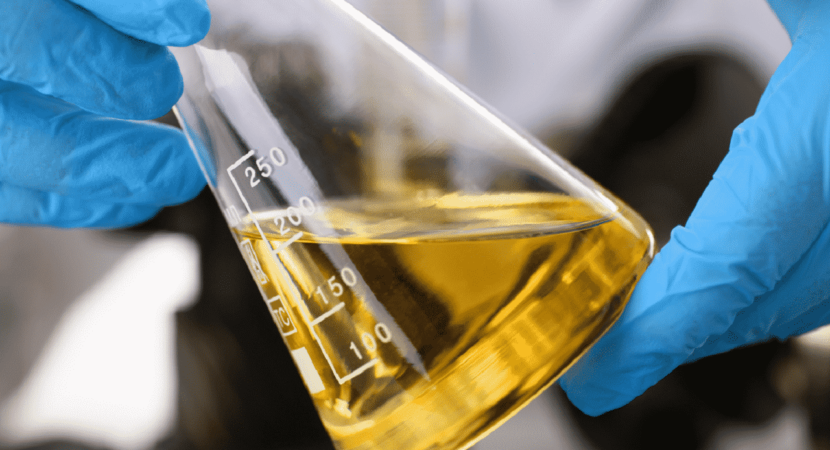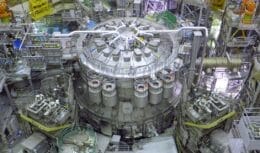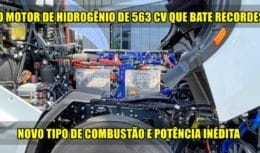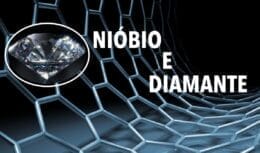
Research carried out in two USP laboratories is working hard on a nickel catalyst to obtain results that can be directly applied in the renewable industry by transforming CO2 into fuel or even plastic
Researchers from the University of São Paulo (USP) are working on transforming carbon dioxide (CO2) into fuel or plastics. Even subjected to high pressure, a new catalyst made from nickel, zinc and carbon transformed CO2, one of the main greenhouse gases (GHG), into carbon monoxide (CO). The head professor of project development, Liane Rossi, is happy with the progress in the work and spoke about the results from her research, which showed that she and her team of researchers are getting closer and closer to producing concretely, through catalysis, petroleum derivatives, such as plastics and fuels. Liane is a professor at the Institute of Chemistry at USP and study coordinator at the FAPESP Shell Research Center for Gas Innovation (RCGI).
USP related articles
- End of air conditioning: USP engineers are studying surface geothermal energy capable of taking air out of the ground and reducing the electricity bill by up to 40%
- Owner of the Copagaz and Liquigás brands signs a partnership with USP to develop a BioGLP project, which emits up to 80% less carbon in combustion than fossil fuels
- UFMG and UFV will receive solar energy plants with 1.600 capture modules to supply their campuses
- USP, the largest public university in Brazil, opens enrollment for free online and distance learning courses with certificates
- USP, the best institution of higher education in Brazil, is accepting registrations for free courses with distance learning
Nickel catalyst is already the subject of an international scientific magazine, as the future of the renewable industry
The research by the USP scientists was featured in two foreign publications, one of which was the scientific journal European Journal of Inorganic Chemistry. In the November 2021 issue, the magazine's cover brought the article signed by the USP researchers.
The site ChemistryViews also had repercussions on Professor Liane's work. After several studies, the researchers discovered that the catalyst made of nickel obtained an excellent performance after being subjected to high temperature, with exactly 800 degrees Celsius, in an atmosphere of CO2 and H2 (hydrogen) or in an atmosphere of methane or propane.
However, the research is not over, as unfortunately the USP researchers have not yet been successful in testing the catalyst under high pressure conditions, between 20 and 100 bar, so that it can try to adapt to the reaction conditions required for the process after the transformation of CO into liquid products.
Experiments and tests
According to Liane, the combination in the catalyst changes the form of interaction between the molecules, which can be directly compared to pure nickel. The catalyst based on nickel, zinc and carbon was a solution initially developed by Nágila Maluf, a doctoral student at IQ-USP, a member of the team of researchers coordinated by Liane.
The experiments are taking place in two separate research groups at IQ-USP, one at the Nanomaterials and Catalysis Laboratory and the other at the Sustainable Carbon Laboratory, which is being monitored by Professor Pedro Vidinha, co-author of the research.
The Physics Institute of USP in São Carlos and the Pacific Northwest National Laboratory (PNNL), from the United States, are also monitoring the testing phase at USP laboratories. All these processes have been developed in favor of the renewable industry.
Next phase of research
Liane's team of researchers is now preparing to proceed with the study, with a view to using two different catalysts in the same reactor. One of them will be based on nickel, zinc and carbon and the other will be based on iron or copper.
The second catalyst will have the function of favoring the reaction between the CO and H2 molecules, with the aim of producing alcohols or hydrocarbons (products with high added value).











Good morning, Bruno, We haven’t met yet.…
Total success. Just get the hydrogen by…
A country without technology and that doesn’t…
We should help conserve our forests…
The Report is wrong, there is no…
I don't know where they think...
Now Cuiabano says Argentina…
The opportunities they are giving are very good